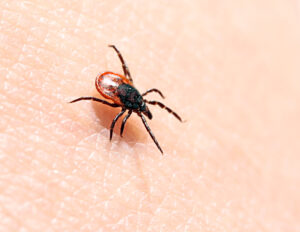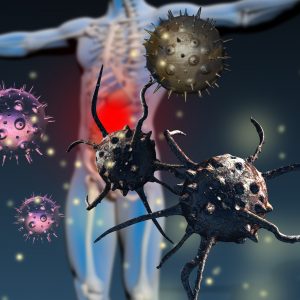
Leaky Gut, Chronic Disease, & Long Term Health
Leaky Gut This blog discusses the very important health issue of leaky gut. You will learn: What is the gut & the gut microbiome What
If you are a doctor or clinician looking to make a bigger impact on the world, have more job satisfaction and have up-to-date protocols and treatment solutions for your patients, check out our free functional medicine training led by functional medicine expert, Dr. Miles Nichols below.
Plus additional BONUS training videos on treating tough cases of brain fog and cognitive impairment!!
In this blog, we will look at Bartonella. You will learn:
Do you know what Bartonella is and how it spreads? Do you or your clients know why Lyme Disease and its co-infections are becoming increasingly common? If you want to know more about this growing threat and how to best optimize the health of your clients, then this blog is for you. Please read on for answers!
Do you get stuck clinically with chronic symptoms in your patients? Would you like to have a larger impact on improving your clients’ issues?
The key to optimal health is an individual approach using nutrition, lifestyle and exercise. To improve your patients’ quality of life, you need to identify and address the root causes. Our functional medicine course will teach you how to do this. Look into our functional medicine school to have a greater impact on improving your client’s lives.
** Please note: If you want the short summary version of this
What is Bartonella?
Bartonella is a bacterium that causes the disease Bartonellosis. It can infect humans and animals, including cats and dogs, and cause Bartonellosis. In recent years, Bartonella infections are reported to be on the rise (Álvarez-Fernández A, 2018).
What we call the Bartonella bacteria is actually approx. 15 different bacterial species (Columbia Univ., 2022). 38 different Bartonella species have been detected in humans and animals and 13- 15 Bartonella species cause disease in humans (Álvarez-Fernández A, 2018). Three species are thought to be responsible for the majority of Bartonella illness: Bartonella bacilliformis, Bartonella quintana and Bartonella henselae (Álvarez-Fernández A, 2018).
The severity of Bartonella infection is related to the patient’s immune status and how immune-compromised they may or may not be (Angelakis E, 2014). Many human Bartonella infections are poorly understood. It is possible that some of the Bartonella bacterial species are non-pathogenic and do not cause symptoms, at least in immunocompetent people with a strong immune system (Columbia Univ., 2022).
Is Bartonella the Same as Lyme Disease?
Bartonella is a co-infection of Lyme Disease. A co-infection is a simultaneous infection by two or more pathogens that cause disease. A Lyme Disease co-infection is when a person is simultaneously infected with Lyme Disease and one or more of the other vector-borne diseases. Co-infections may actually be more common than a single infection.
Co-infections may explain why some people with Lyme remain chronically ill, even after treatment.
What are the Symptoms of a Bartonella Infection?
The symptoms of Bartonella can vary from mild to severe and life-threatening. Bartonella symptoms usually begin 5 to 14 days after infection (Lymedisease.org, 2022). The early, common symptoms include fever, headaches, fatigue, poor appetite, brain fog, muscle pain and swollen glands around the head, neck and arms. Bartonellosis may include a rash that looks like stretch marks from pregnancy.
Other common symptoms include blurred vision, numbness in the extremities, memory loss, balance problems, tremors and even psychiatric issues or neurological symptoms.
Symptoms specific to cat scratch disease are swollen lymph nodes, a pustule (similar to a pimple) at the infection site and possibly fever. In rare cases, it can also cause complications affecting the brain, eye disorders, severe muscle pain, infections of the liver, spleen or bones.
How Serious is a Bartonella Infection?
Bartonella infection does not always cause obvious illness. Healthy people can test positive for Bartonella but have no history of typical Bartonella symptoms. Those who do get sick often develop only a mild case that usually resolves itself without treatment (NORD, 2020).
However, Bartonella can cause severe infection in some people. Immunocompromised patients, those undergoing immunosuppressive treatments for cancer, organ transplant patients and people with HIV/AIDS, are more likely to develop severe, life-threatening disease.
Bartonella can cause chronic infection. Some species of Bartonella may lead to a chronic infection lasting months to years, and possibly also causing a range of neuropsychiatric symptoms (Balakrishnan et al. 2016). People may have relapses because the Bartonella bacteria can persist and hide from the immune system (Lymedisease.org, 2022).
These rare symptoms are more common in immunocompromised patients including small children with less developed immune systems. Without treatment, a severe Bartonella infection can be fatal.
How is Bartonella Transmitted or how do People get Bartonella?
Bartonella has been found in 49 out of 50 US states (Lymedisease.org, 2022). It is a vector-borne disease. Bartonella bacteria are transmitted by fleas, sand flies, lice, biting flies and most likely ticks (Deng H, 2018). It is also transmitted by animal bites and scratches. Cats are often carriers of Bartonella bacteria, hence the name ‘cat scratch disease’.
Cat scratch disease is caused by Bartonella henselae and can result from a cat scratch or bite (Columbia Univ., 2022).
It is thought that ticks transmit it to humans but this is not entirely certain. The evidence for ticks as vectors of Bartonella is circumstantial but strong: (Columbia Univ., 2022)
get a Bartonella birtiesii infection from an infected mouse and transmit this infection to another uninfected mouse (Reis et al. 2011).
Ticks are often infected with multiple pathogens that may be bacterial, viral or parasitic. One study found 45% of ticks were co-infected with up to 5 different pathogens (Lymedisease.org, 2022). This makes ticks a common vector of various diseases including Lyme co-infections.
Finally, a recent study suggests that Bartonella may be passed from mother to unborn child through perinatal transmission (Lymedisease.org, 2022).
How Common is Bartonella?
20’000 cases of Bartonella henselae or cat scratch disease are reported each year in the US (Columbia Univ., 2022). Cat scratch disease caused by Bartonella henselae infection occurs in approximately 1 per 10,000 persons (NORD, 2020). 33% of patients with cat scratch disease are 14 years old or younger (NORD, 2020).
Cat scratch disease occurs throughout the US and worldwide. The incidence is higher in regions with higher temperatures and humidity, which supports large flea populations (NORD, 2020). In the US, the majority of cases occur between the months of July – January and are higher in the South and lower in the West (NORD, 2020).
Does your current health situation look like this…
We specialize in finding answers and solutions for complicated chronic illness when people feel like they have tried everything. If this sounds like you, book a free call with us to see if we are the right fit for your health goals.
What is the Mechanism of Action of the Bartonella Bacteria?
Bartonella bacteria live primarily inside the lining of the blood vessels. The bacteria invade red blood cells (erythrocytes) and the lining of the blood vessels (endothelial cells) (NORD, 2020). Inside the erythrocytes, it is protected from the immune system. This is how the Bartonella bacteria can gain persistence, which happens in some cases (NORD, 2020). This bacteria can sometimes persist and remain in the human body.
One study looked at how Bartonella behaves in the body (Deng H, 2018). Bartonella bacteria was released into the blood stream between 2-5 days post-infection. Once in the blood stream, Bartonella was able to escape the immune system responses, stick to and then enter erythrocytes or red blood cells (RBCs) (Deng H, 2018). Inside the RBCs, they replicated and persisted for several weeks (Deng H, 2018).
The Bartonella bacteria has several virulence factors that allow it to persist in RBCs over time: (Deng H, 2018)
Most Bartonella species can survive in infected erythrocytes for several weeks, infecting the body and stimulating symptoms, making a person sick (Deng H, 2018).
How is Bartonella Diagnosed?
Blood tests are used to diagnose Bartonella infections. They test for both IgM and IgG antibodies. However, false negatives occur. One study found a positive result in only 30% of patients who had a Bartonella infection confirmed by a PCR test (Columbia Univ., 2022).
Cross reactions may occur with antibodies to other infections such as chlamydia and rickettsial, another Lyme co–infection (Columbia Univ., 2022). Given the cross-reactivity of the Bartonella antibody tests, a PCR test may be a more reliable test for Bartonella infection (Columbia Univ., 2022).
Western blot tests appear to have greater specificity for Bartonella, meaning there are fewer false negative results.
It can be tricky to diagnose as tests for Bartonella may be negative one time and positive another (Lymedisease.org, 2022).
What is the Treatment for Bartonella?
To date, no single treatment is effective for all Bartonella-associated diseases (Angelakis E, 2014).
Cat scratch disease usually has a very good prognosis, with no long-term health effects. (NORD, 2020). It usually resolves itself without any treatment, within 2 to 4 months. Medicine is only given if needed. Fever reducers and pain relievers / analgesics may be given if required (NORD, 2020).
Antibiotic treatment is usually not necessary for uncomplicated cases of Bartonella henselae infection. Evidence does not show that antibiotics shorten the duration of the disease.
Antibiotics may be considered for severe or systemic disease. For complicated Bartonella infections infecting the central nervous system, antibiotics are needed. The optimal length for this treatment has yet to be determined, but guidelines suggest 4-6 weeks (Breitschwerdt 2014). Typically, several antibiotic medications are used in combination (Lymedisease.org, 2022). Faster reduction of lymph node size has been seen with a 5-day course of azithromycin (NORD, 2020).
A longer duration of treatment with antibiotics is recommended for immunocompromised patients and when the liver or other organs are involved (NORD, 2020).
There are also herbal approaches to take with Bartonella. Like with Lyme Disease, various combinations of herbs such as oregano and Japanese knotweed can often be more effective than antibiotics. We will discuss treatment for Bartonella infections in a future blog so keep an eye out!
Summary
In our clinic, we are Lyme-literate doctors. We are experts at identifying root causes, diagnosing conditions like chronic Lyme Disease and Lyme co-infections. We help people to address the root causes of illness and improve their health. We treat Lyme co-infections and chronic Lyme symptoms, with both natural and pharmaceutical approaches, depending on the individual case.
** Please stay tuned for our next Blog! **
If you are a clinician wanting to learn more about treatment of Lyme Disease, please check out our clinician training programs here.
Does your current health situation look like this…
We specialize in finding answers and solutions for complicated chronic illness when people feel like they have tried everything. If this sounds like you, book a free call with us to see if we are the right fit for your health goals.








Leaky Gut This blog discusses the very important health issue of leaky gut. You will learn: What is the gut & the gut microbiome What

Research on Alzheimer’s disease is continuously looking for what causes the disease and how to better treat Alzheimer’s. A relatively new finding suggests that Alzheimer’s

In this blog, we will look at Lyme Disease and answer the question ‘How does Lyme Disease become chronic?’ You will learn: What Lyme Disease

In this blog, we will look at the causes of Bartonella. You will learn: What Bartonella is and how it compares to Lyme Disease What

In this blog, we will look at the many symptoms of Bartonella. You will learn: What Bartonella is and what causes it What are the

In this blog, we will look at Bartonella. You will learn: What Bartonella is and how it compares to Lyme Disease How Bartonella is spread

In this blog, we will look at Lyme Disease and answer the question ‘Is Lyme Disease curable?’ You will learn: What Lyme Disease is How

In this blog, we will look at Lyme Disease and the growing threat that it has become. You will learn: What Lyme Disease is How

In this blog, we will look at Lyme Disease and mental health. You will learn: How and why Lyme Disease can affect mental health How

In this blog, we will look at cognitive impairment & Alzheimer’s Disease in relation to various lifestyle factors. You will learn: How lifestyle can affect

Alpha Gal Syndrome Today’s article outlines a condition that is thought to affect, conservatively, 3% of the US population. However, there may be many undiagnosed

Can Lyme Disease Cause Joint Pain? In this blog, we will look at Lyme Disease and joint pain. You will learn: How & why Lyme
There was a problem reporting this post.
Please confirm you want to block this member.
You will no longer be able to:
Please allow a few minutes for this process to complete.

